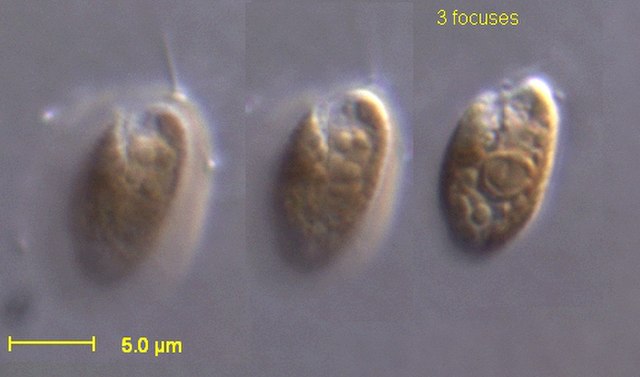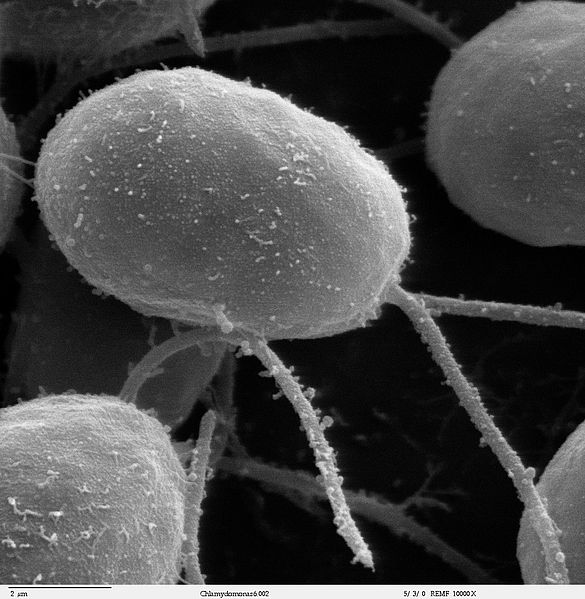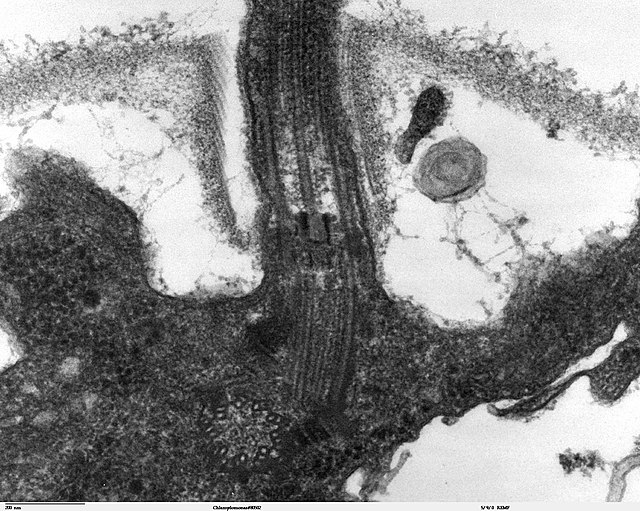The cryptophyceae are a class of algae, most of which have plastids. About 230 species are known, and they are common in freshwater, and also occur in marine and brackish habitats. Each cell is around 10–50 μm in size and flattened in shape, with an anterior groove or pocket. At the edge of the pocket there are typically two slightly unequal flagella.
Cryptophyceae
Cryptophytes under SEM
Cryptophytes under light microscope
A flagellum is a hairlike appendage that protrudes from certain plant and animal sperm cells, from fungal spores (zoospores), and from a wide range of microorganisms to provide motility. Many protists with flagella are known as flagellates.
SEM image of flagellated eukaryote Chlamydomonas sp. (10000×)
Bacterial flagellar motor assembly: Shown here is the C-ring at the base with FliG in red, FliM in yellow, and FliN in shades of purple; the MS-ring in blue; the MotAB in brown; the LP-ring in pink; and the rod in gray.
Longitudinal section through the flagella area in Chlamydomonas reinhardtii. In the cell apex is the basal body that is the anchoring site for a flagellum. Basal bodies originate from and have a substructure similar to that of centrioles, with nine peripheral microtubule triplets (see structure at bottom center of image).
The "9+2" structure is visible in this cross-section micrograph of an axoneme.







